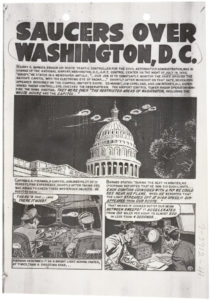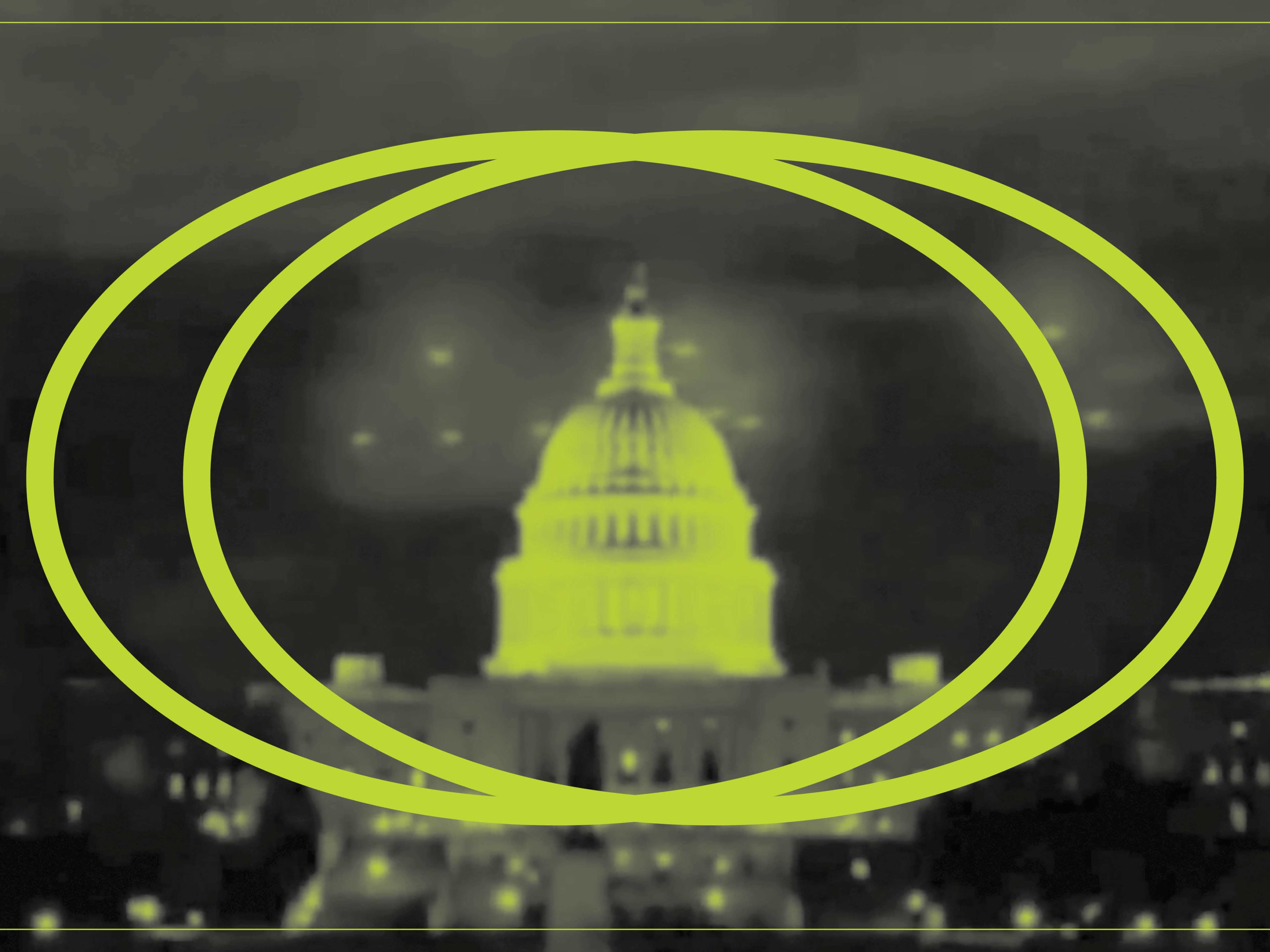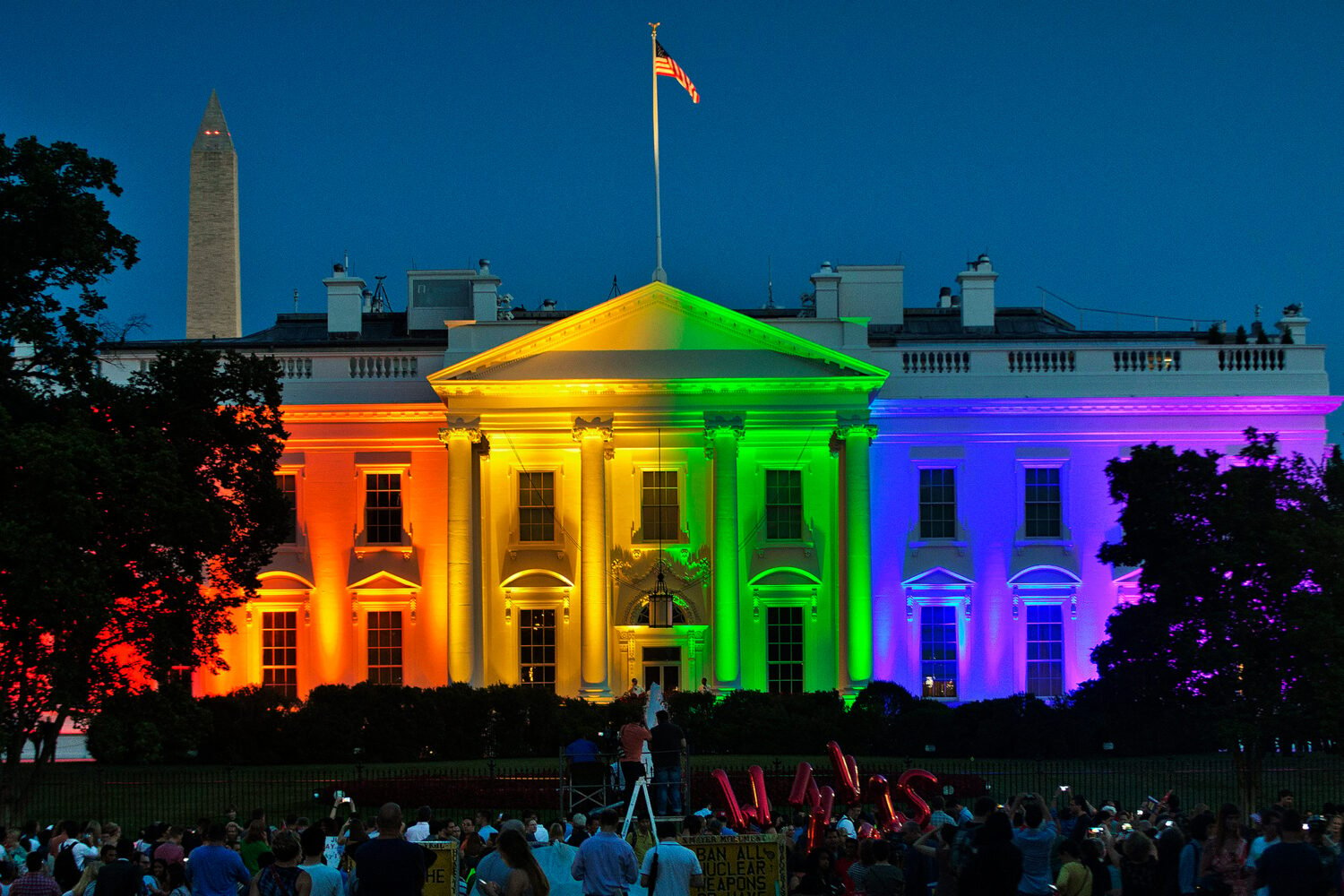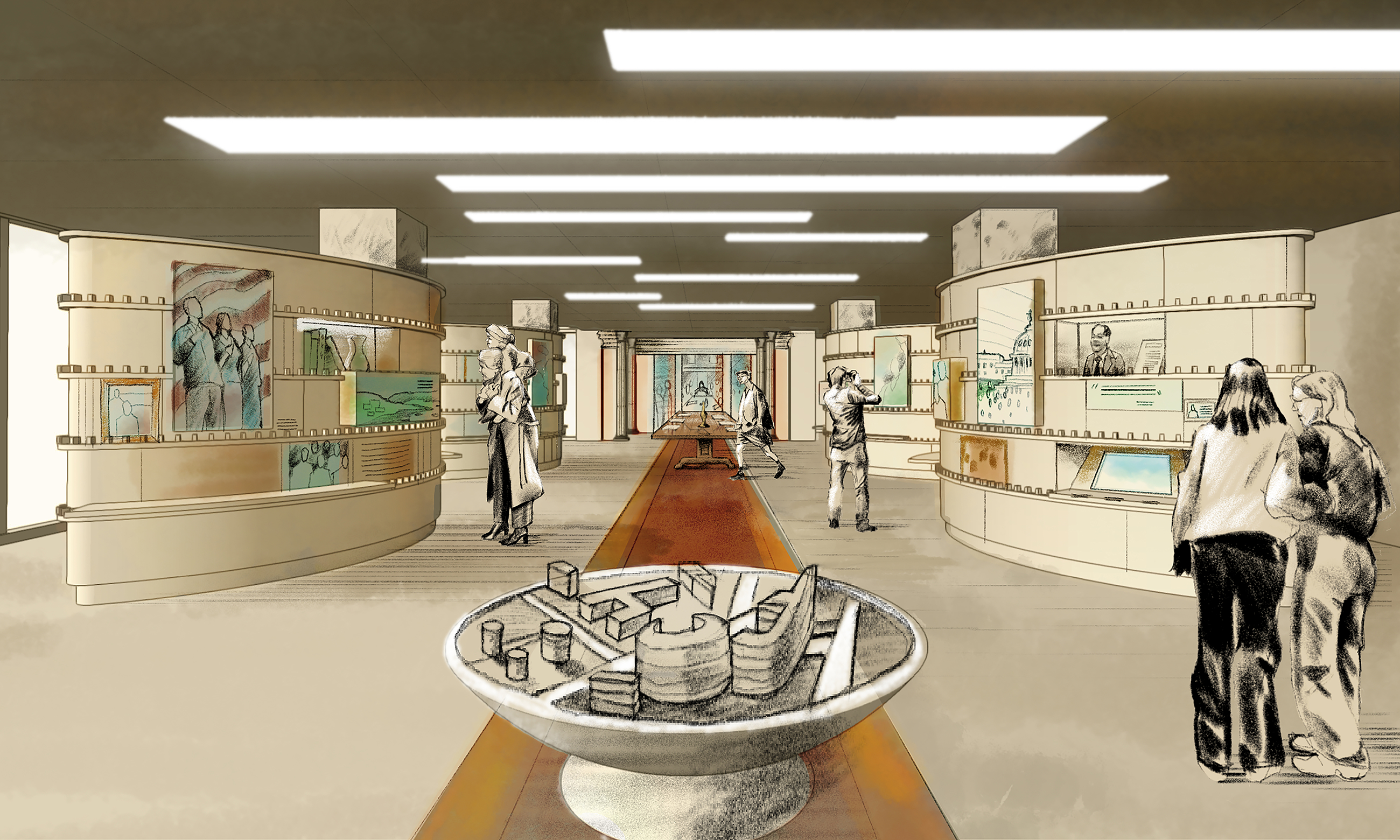
It’s been called the “Invasion of Washington.” Back in the summer of 1952, UFOs may have buzzed the nation’s capital.
The first incident occurred before midnight on July 19, when an air-traffic controller at what was then Washington National Airport reported seven unexplained radar blips, including over the White House and Capitol. Other controllers—at National and Andrews Air Force Base—and even a pilot in the air, also reported strange objects. One controller at National, according to a 2002 Washington Post account, looked out of the tower and saw a “bright light hovering in the sky” that resembled “a saucer” and then took off at “incredible speed.” Fighter jets were launched but encountered no suspicious craft.
The next weekend, the odd radar blips were back—this time, air-traffic controllers counted a dozen. An Iowa newspaper would later blare: “Saucers Swarm Over Capital.”
This was just five years after strange debris—which some speculated was a flying saucer but others said was a weather balloon—was found on a ranch in Roswell, New Mexico. America’s interest in flying saucers was likewise stirred up by an April 1952 Life story headlined “Have We Visitors From Outer Space?” According to the Post, UFO sightings spiked—from 23 in March, before the article, to 148 in June. In this atmosphere came the DC “invasion.” (Accompanying Luke Mullins’s article about “UFO lobbyist” Stephen Bassett are recreations of a photo, shown below, that purported to show UFOs over the Capitol.)

Radar experts theorized that the culprit in DC might have been a temperature inversion, in which warm air sits atop cooler air, trapping it. This can invert radar, too, causing it to bounce off that ceiling and make objects on the ground appear to be in the sky. Some feared it was advanced aircraft from Russia. The Air Force first said it had no idea what the blips were; later, it suggested a temperature inversion had produced the phenomenon. Other experts challenged that explanation, according to the Post.
Almost 71 years later, it remains yet another mystery floating around Washington.
This article appears in the August 2022 issue of Washingtonian.



















